Your bedroom isn’t just where you sleep—it’s your sanctuary, your morning launchpad, and your evening retreat. Yet many of us neglect this crucial space, focusing our design energy on the rooms guests actually see. According to a 2024 survey by the National Sleep Foundation, people who rate their bedrooms as “well-designed” report falling asleep 15 minutes faster on average and experience 27% fewer nighttime awakenings.
Today, we’re diving into 22 bedroom style ideas that balance coziness, modern aesthetics, and personal expression. These aren’t your typical “buy a new duvet” suggestions—we’ve dug deeper to find approaches that transform spaces on multiple levels. Whether you’re working with a tiny urban apartment or a spacious suburban master suite, these ideas will help you create a space that reflects who you are while supporting your wellbeing.
Let’s transform your bedroom from just a place to crash into a space that genuinely feels like home.
Foundation Elements of a Well-Designed Bedroom
Before diving into specific styles, let’s explore the fundamental elements that make any bedroom work. These building blocks create the foundation upon which your personal style can flourish.
1. Layered Lighting Solutions

Most bedrooms make do with a single overhead light and maybe a bedside lamp—a setup that ignores the complexity of activities that happen in this space. Interior designer Elaine Rodriguez explains, “Bedrooms serve at least five distinct functions, from dressing to reading to intimacy, each requiring different lighting scenarios.”
Consider implementing these three essential lighting layers:
- Ambient lighting: Beyond the standard ceiling fixture, think about wall sconces that wash light up walls to create a sense of space, or cove lighting behind a dropped ceiling edge for a soft glow.
- Task lighting: Adjustable reading lights that direct illumination precisely where needed can prevent eye strain. Look for options that clamp to headboards or extend from walls to save precious nightstand space.
- Accent lighting: Small LED strips under floating shelves or behind headboards add depth and dimension without overwhelming the space.
According to lighting specialists at Lumens, bedrooms typically need 10-20 lumens per square foot for ambient lighting, with task areas requiring 20-50 lumens per square foot. Many homeowners overlook this calculation, resulting in spaces that feel either too dim or harshly bright.
Pro tip: Install dimmer switches for all bedroom lighting. They’re inexpensive upgrades (typically $15-30 per switch) that dramatically increase your control over the room’s mood.
2. Statement Headboards That Transform Spaces
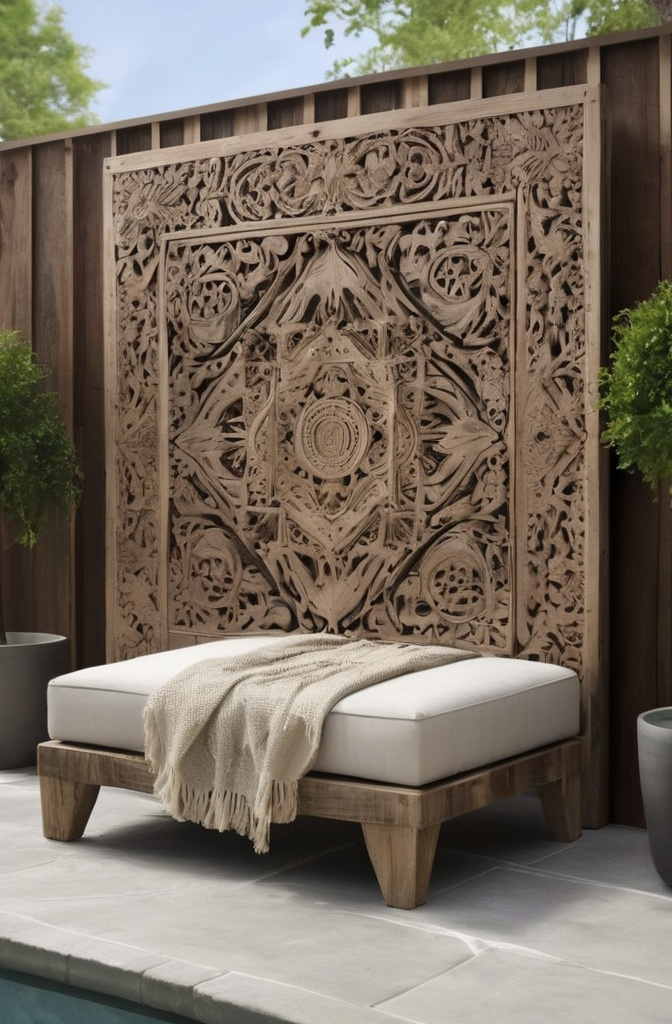
“The headboard is to bedrooms what the sofa is to living rooms—the natural focal point and style anchor,” notes furniture designer Marcus Chen. Yet many homeowners undersize this crucial element.
Consider these approaches:
- Floor-to-ceiling upholstered panels: Extended fabric panels create visual height while absorbing sound for a quieter sleep environment. Designer Nate Berkus often uses this technique to make standard-height rooms feel more luxurious.
- Architectural salvage: Repurposed doors, window frames, or decorative molding create one-of-a-kind headboards with history. Restoration Hardware has built an entire business model around this concept, but you can achieve similar results with finds from architectural salvage yards at a fraction of the cost.
- Built-in storage solutions: Integrating shelving and nightstands into a continuous headboard unit maximizes functionality in smaller bedrooms while creating a custom look.
When selecting headboard materials, think beyond visual appeal. Textured surfaces like bouclé or velvet provide tactile comfort for those who like to sit up in bed reading or working.
3. Strategic Color Psychology

Colors affect us in ways most people dont even realize. A 2023 study published in the Journal of Environmental Psychology found that bedroom wall colors influenced participants’ sleep quality, with certain blue tones reducing time to fall asleep by up to 18 minutes compared to red or purple rooms.
Current color trends for bedrooms include:
- Earthy neutrals: Shades like clay, oatmeal, and warm greys create a grounding effect that supports relaxation.
- Desaturated blues: Especially those with grey undertones, provide restfulness without feeling cold.
- Green variations: From sage to olive, these nature-inspired hues have shown particular effectiveness in reducing stress hormones.
Rather than painting all four walls the same color, consider these more sophisticated approaches:
- Color blocking: Use half-walls of different colors to visually alter room proportions.
- The 60-30-10 rule: Dedicate 60% of visual space to a dominant color (typically walls), 30% to a secondary color (bedding, large furniture), and 10% to accent pieces.
- Fifth wall focus: Painting the ceiling a deliberate color rather than defaulting to white can dramatically change how a room feels.
Designer Kelly Wearstler suggests, “The bedroom is the perfect place to experiment with color because it’s your private space—you don’t need to worry about what guests think.”
4. Sustainable Material Selection
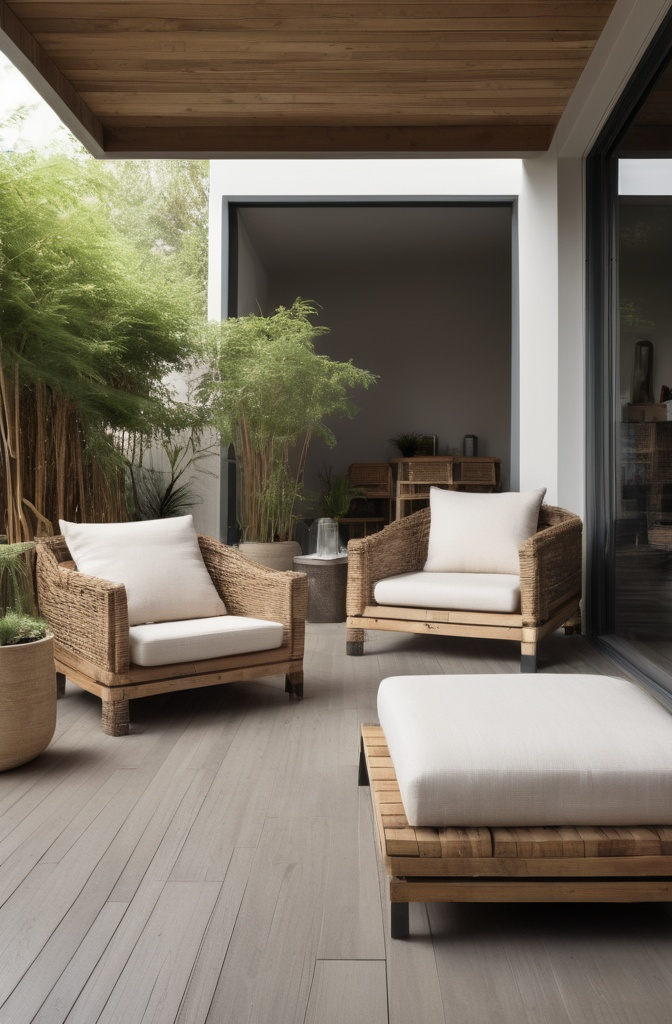
The materials in your bedroom don’t just affect aesthetics—they impact your health and the planet. The average mattress contains over 10 pounds of chemical flame retardants, many of which have been linked to health concerns according to the Environmental Working Group.
Consider these sustainable alternatives:
- GOTS-certified organic bedding: These textiles are grown without pesticides and processed without harmful chemicals, resulting in sheets and pillowcases that are both healthier and more durable.
- Reclaimed wood furniture: Beyond the environmental benefits, aged wood brings character and natural variation that new pieces can’t match.
- VOC-free paints: Traditional paints can off-gas volatile organic compounds for years. Brands like Clare and ECOS offer beautiful colors without the chemical exposure.
The sustainable bedroom doesn’t need to look like a hemp sanctuary. Brands like West Elm and Crate & Barrel now offer extensive eco-friendly options that maintain contemporary styling while reducing environmental impact.
Cozy Elements That Elevate Comfort
Coziness goes beyond just adding blankets. These elements take comfort to the next level through multiple sensory channels.
5. Layered Textile Approaches
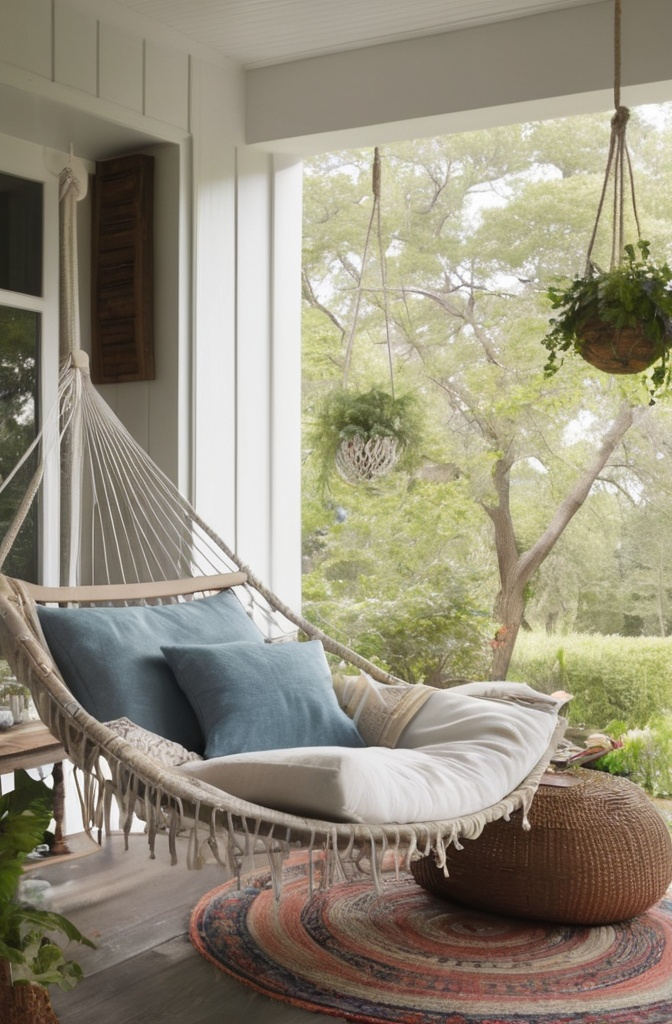
The secret to truly cozy bedrooms isn’t a single plush element but thoughtful layering. “Textures do what colors can’t—they add dimension you can actually feel,” explains textile designer Anjali Purohit.
Consider these layering strategies:
- Foundation layers: Start with high-quality sheets (480 thread count is typically the sweet spot between durability and softness) in breathable natural fibers.
- Mid layers: Add lightweight quilts or coverlets that can be easily adjusted as temperatures change.
- Top layers: Incorporate throws of varying weights and textures placed at the foot of the bed or draped over corners.
- Accent pieces: Smaller elements like lumbar pillows and bolsters provide both visual interest and functional support.
The mix of textures should include at least three distinct feels—perhaps linen sheets (crisp but softening with each wash), a cotton quilt (smooth and substantial), and a bouclé or chunky knit throw (visually engaging and pleasurable to touch).
For those seeking evidence-based comfort, weighted blankets have moved beyond trend status to proven sleep aid. A 2022 study in the Journal of Sleep Research found that participants using 12% body-weight blankets experienced deeper sleep and fewer anxiety symptoms.
6. Sound-Dampening Solutions
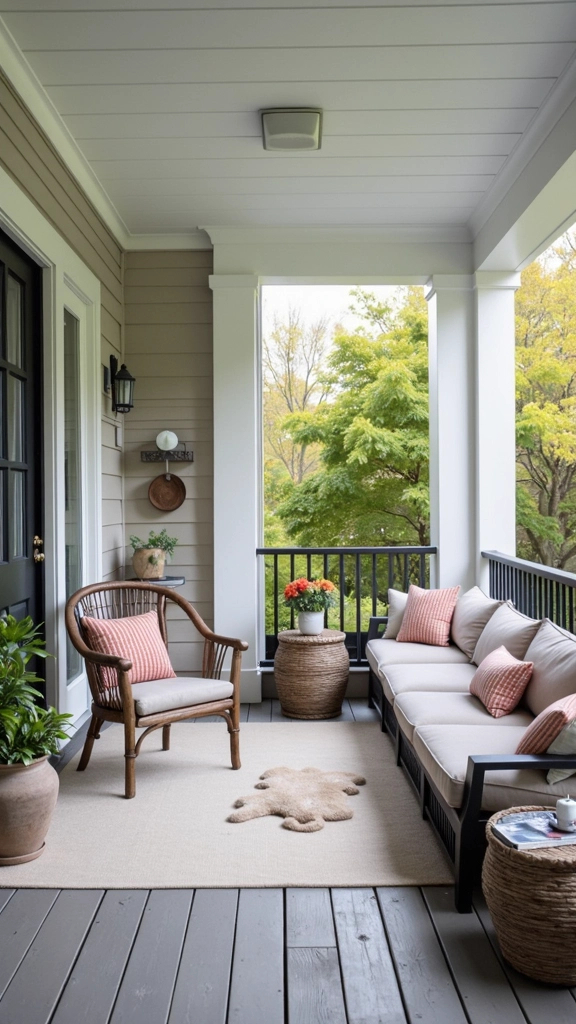
We often overlook noise pollution in bedroom design, yet it significantly impacts sleep quality. A 2023 Mayo Clinic study found that reducing ambient noise by just 5 decibels improved deep sleep duration by 7-12%.
Consider these approaches:
- Upholstered wall panels: Available in endless fabric options, these panels add insulation while reducing sound reflection. Companies like Felt Right offer modular solutions that double as design elements.
- Acoustic ceiling treatments: Sound-absorbing panels can be installed directly onto ceilings to reduce noise reflection while adding architectural interest.
- Window treatments: Double-layered curtains with thick interlining can reduce outside noise infiltration by up to 10 decibels according to acoustic testing by Hunter Douglas.
- Rugs and carpeting: Hard flooring surfaces reflect sound while soft surfaces absorb it. Even in predominantly hardwood homes, bedroom carpeting or large area rugs significantly improve acoustics.
For urban dwellers, sound machines have evolved beyond simple white noise. The latest models from companies like Lectrofan offer customizable sound profiles based on your specific noise issues, from traffic to noisy neighbors.
7. Temperature Regulation Features
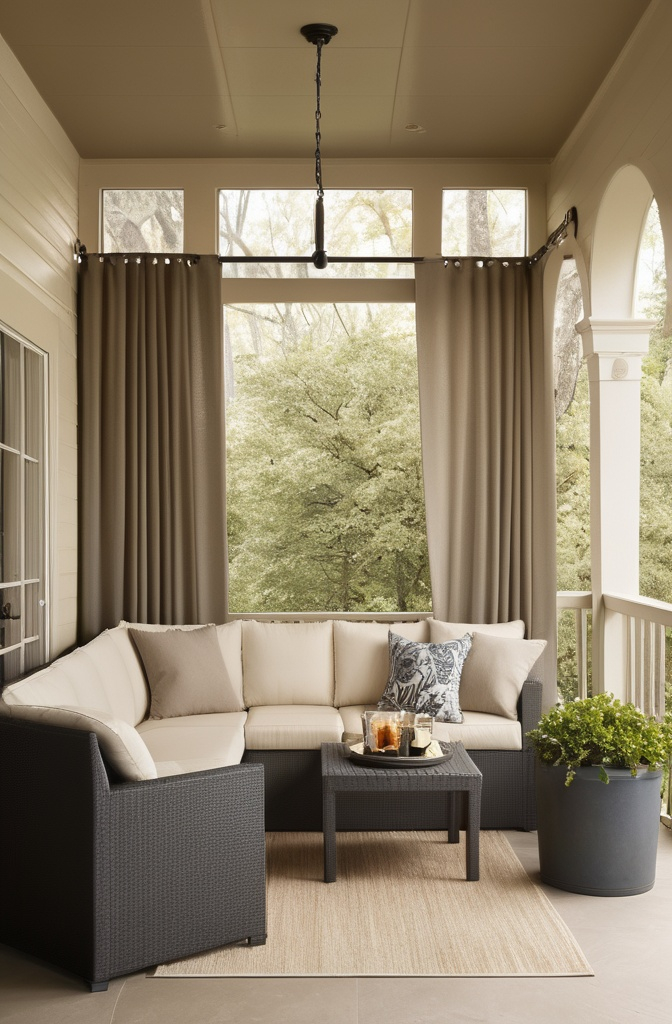
Sleep specialists consistently identify temperature as one of the most critical factors in sleep quality. According to neurologist Dr. Christopher Winter, author of “The Sleep Solution,” the ideal bedroom temperature ranges between 65-68°F (18-20°C), but individual preferences vary.
Consider these temperature-optimization strategies:
- Dual-zone mattress technology: Products like the Eight Sleep Pod allow partners with different temperature preferences to customize their side of the bed, with up to 12°F difference between sides.
- Phase-change materials: Textiles infused with phase-change technology (like Outlast) actively regulate body temperature by absorbing excess heat when you’re hot and releasing it when you cool down.
- Smart thermostats with bedroom sensors: Systems like Ecobee place dedicated sensors in the bedroom to prioritize sleeping area temperature during nighttime hours.
- Ceiling fans with reversible motors: These should run counterclockwise in summer to create a cooling downdraft and clockwise in winter to recirculate warm air without creating drafts.
Beyond technology, natural materials like wool, bamboo, and certain types of cotton offer superior temperature regulation compared to synthetic alternatives.
8. Aromatherapy Integration
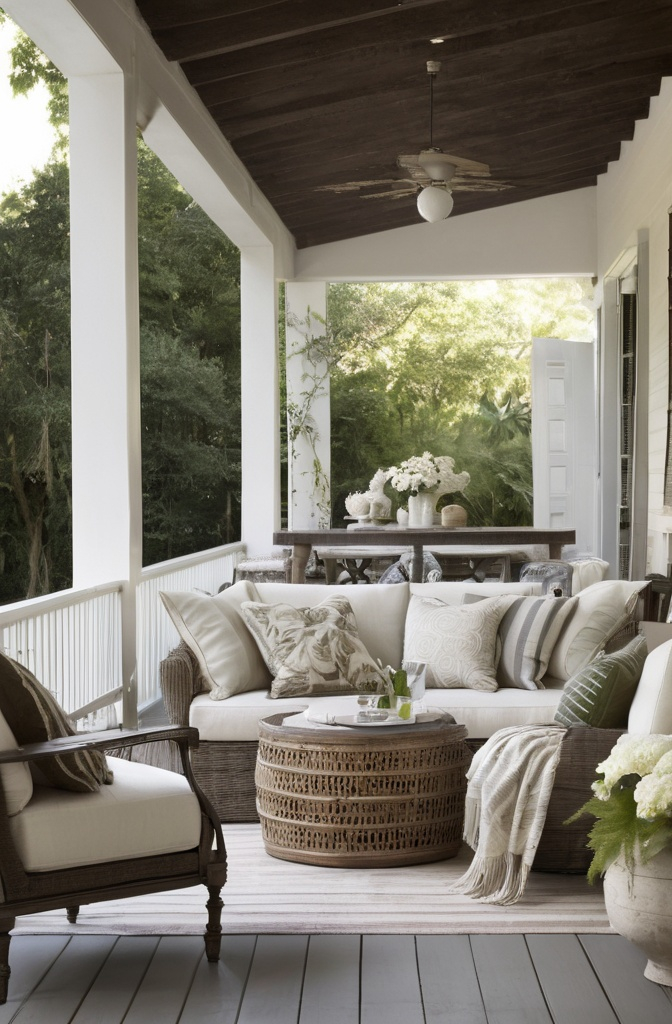
Scent directly affects the limbic system, the part of your brain that controls emotions and memories. A 2024 study in the International Journal of Neuroscience found that lavender aromatherapy reduced stress markers and improved sleep efficiency by 23% compared to control groups.
Consider these approaches for bedroom aromatherapy:
- Ultrasonic diffusers: These create a fine mist of essential oils without heat, preserving their therapeutic properties. Look for models with intermittent settings for overnight use.
- Linen sprays: These allow you to refresh bedding with calming scents like chamomile and lavender without constant diffusion.
- Natural material inclusion: Cedar closet liners, beeswax candles, and even carefully selected plants like jasmine can provide subtle, sustained fragrance.
Scent designer Eduardo Valadez suggests creating “scent rituals” that signal to your brain it’s time to wind down. “Just as children respond to bedtime routines, adults can condition their bodies to recognize sleep cues through consistent sensory experiences,” he explains.
Modern Design Elements with Timeless Appeal
Modern bedroom design balances clean aesthetics with functionality and comfort. These elements feel current but won’t require complete replacement as trends evolve.
9. Minimalist Storage Solutions
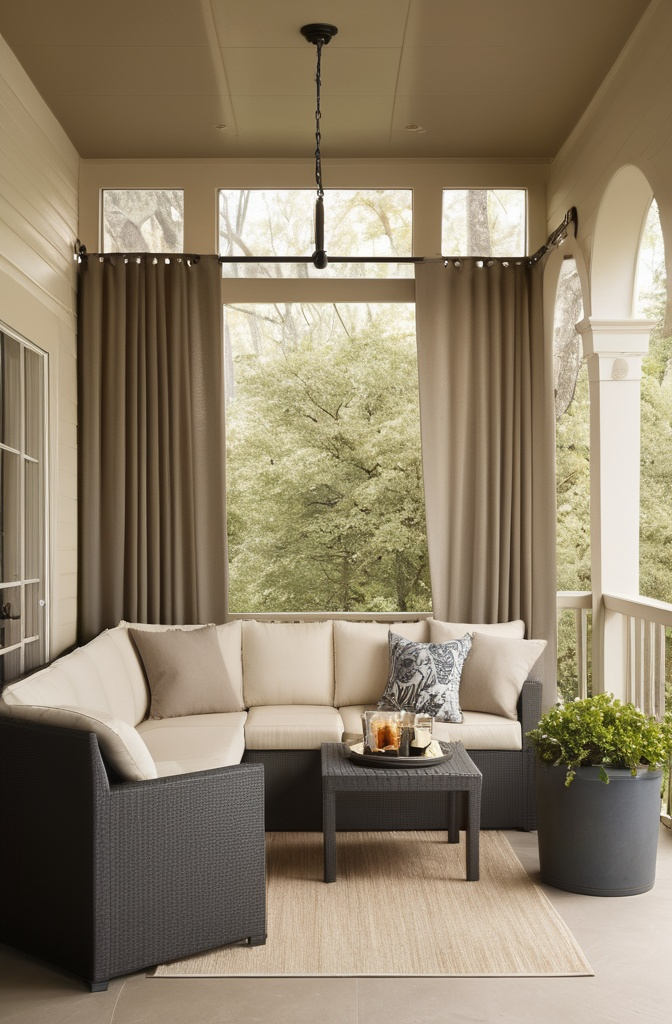
Visible clutter increases cortisol (stress hormone) levels according to a 2022 study from Princeton University. Yet many bedrooms lack adequate storage, leading to accumulation of items that disrupt visual calm.
Consider these storage approaches:
- Floating nightstands: Wall-mounted bedside tables free up floor space while providing necessary surface area. Models with integrated drawers maximize functionality without bulk.
- Under-bed systems: Modern options go well beyond basic boxes with features like hydraulic lift platforms that transform the entire under-mattress area into accessible storage.
- Closet optimization: Professional organizers estimate that most closets operate at just 50% of their potential capacity. Systems like California Closets can double usable space through vertical organization.
Designer Shea McGee popularized the concept of “the power of empty space”—emphasizing that good storage should include some deliberately empty areas that allow the eye to rest and provide room for future acquisitions.
Read This blog: https://hometranquil.com/small-living-room-design/
10. Statement Ceiling Treatments
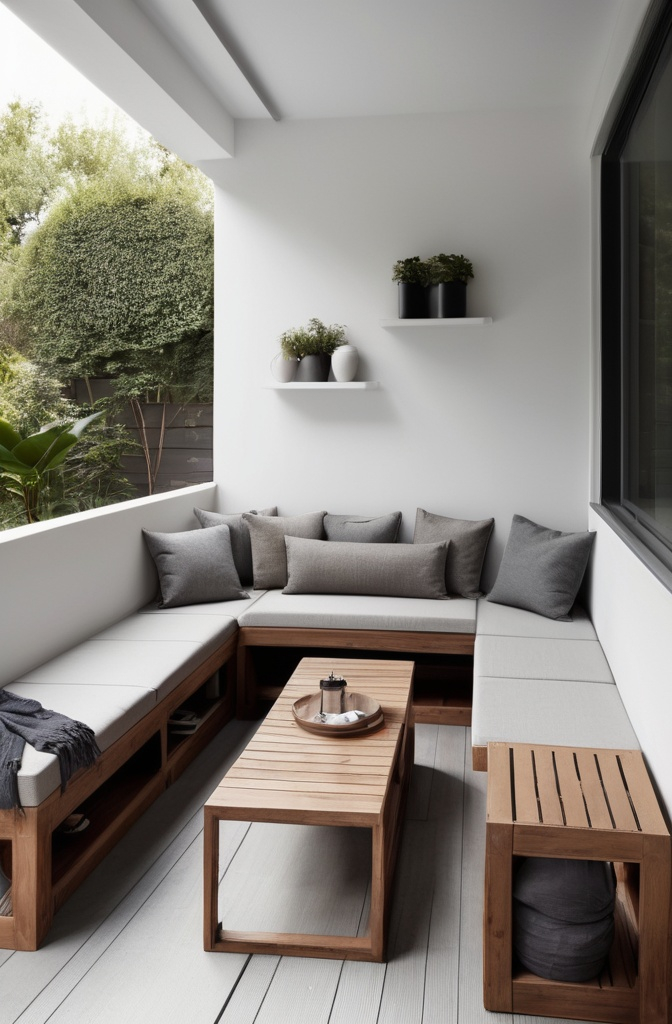
“The ceiling is the most overlooked design opportunity in most bedrooms,” notes architectural designer Anthony Carrino. “It’s literally a fifth wall representing 20% of your visual field when lying in bed.”
Consider these ceiling enhancements:
- Applied molding: Geometric patterns created with thin molding strips can transform a plain ceiling for less than $200 in materials.
- Wallpapered ceilings: Using removable wallpaper on the ceiling creates drama without commitment. Patterns that draw the eye upward, like subtle celestial designs or abstract geometrics, work particularly well.
- Painted coffers: Even shallow faux coffers created with paint can add architectural interest that elevates the entire room.
When addressing ceilings, lighting integration is crucial. Consider cove lighting around the perimeter, recessed lights on dimmer systems, or even projection systems that can transform your ceiling into a starry night sky.
11. Tech-Integration Without Visual Clutter

Technology enhances bedroom functionality but often creates visual chaos and disrupts sleep with blue light and electronic fields. A survey by the Sleep Foundation found that 72% of respondents keep smartphones in their bedrooms, with 37% reporting sleep disruption from notifications.
Consider these tech integration approaches:
- Furniture with built-in charging: Nightstands with wireless charging pads eliminate cable clutter while keeping devices accessible.
- Hidden media centers: Televisions concealed in footboard cabinets or behind art panels prevent the bedroom from feeling like an entertainment center.
- Automated privacy features: Motorized window treatments that can be programmed to open and close with sunrise/sunset reinforce natural sleep cycles while adding convenience.
Smart home integration should focus on sleep quality rather than entertainment potential. Systems like Lutron can automatically create pathways of gentle lighting for nighttime bathroom visits without disrupting melatonin production.
12. Mixed Metal Accents
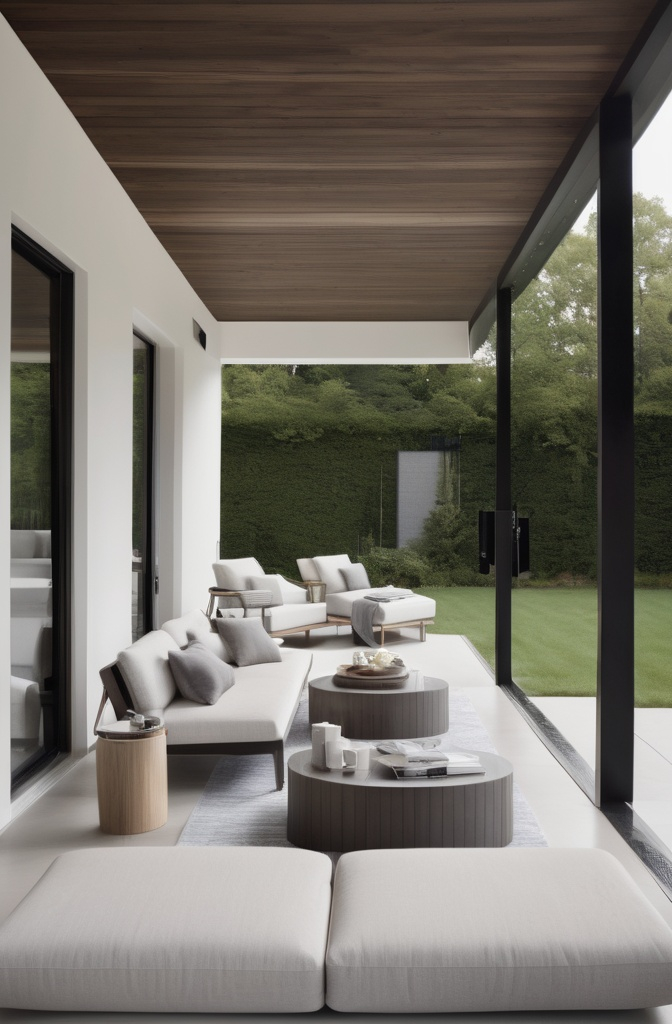
The dogma that all metal finishes must match is outdated. Today’s most sophisticated interiors intentionally mix metals to create visual depth, according to Architectural Digest’s 2024 trend report.
Consider these approaches to mixed metals:
- Dominant/accent methodology: Choose one metal as your primary finish (typically for the largest pieces like bed frames) and one or two complementary metals for smaller accents.
- Temperature consistency: Keeping metals within the same temperature family (all warm tones like brass, gold, and copper OR all cool tones like chrome, nickel, and silver) creates cohesion even with variation.
- Finish variation: Mixing polished, brushed, and hammered versions of the same metal adds textural interest without complexity.
Designer Tom Ford’s home famously features brass details against blackened steel architectural elements—a high-contrast approach that creates dramatic visual interest while maintaining sophistication.
Personalization Strategies
What distinguishes ordinary bedrooms from extraordinary ones is often the level of personal expression they contain. These strategies help infuse your unique identity into the space.
13. Gallery Walls With Purpose

Gallery walls remain popular, but thoughtful curation separates striking collections from visual chaos. “An effective gallery wall tells a personal story through careful selection and arrangement,” explains art consultant Julia Dzafic.
Consider these approaches:
- Thematic collections: Rather than random assortments, focus on cohesive themes like places you’ve traveled, a specific art movement you love, or works in a limited color palette.
- Mixed media presentations: Combining photographs with paintings, textiles, and dimensional objects creates visual rhythm and greater personal significance.
- Digital integration: New-generation digital frames like the Meural Canvas II can rotate through hundreds of personal photos or famous artworks, keeping your visual environment fresh.
For arrangement, the “salon style” (seemingly random but actually carefully balanced) works well for eclectic collections, while grid formations suit more minimal aesthetics. Either way, proper spacing matters—interior designers typically recommend 1.5 to 3 inches between frames.
14. Meaningful Collection Displays
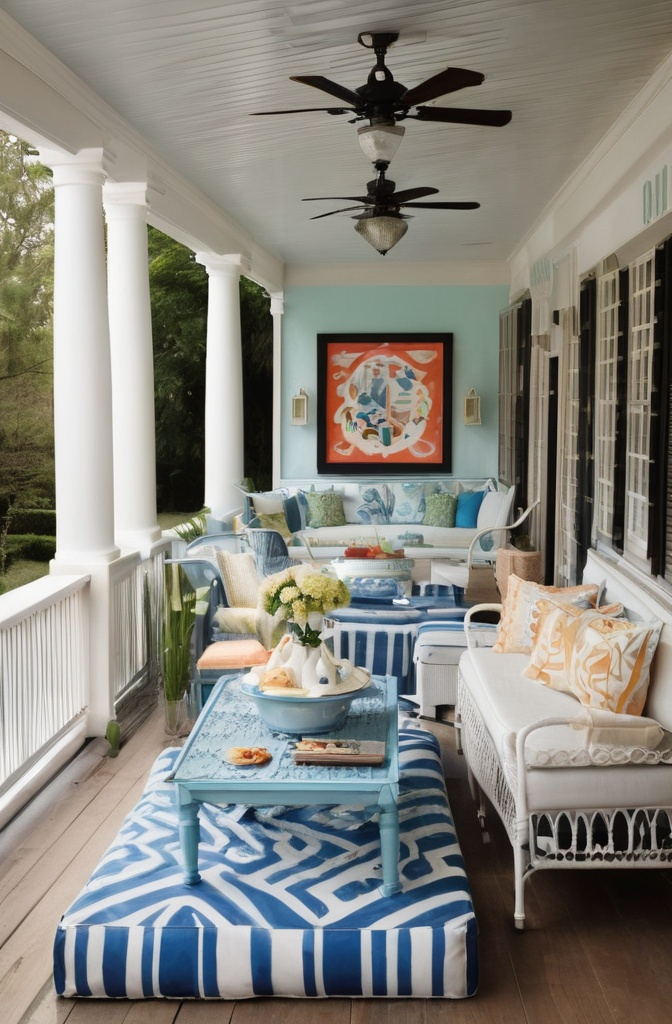
Personal collections transform generic spaces into unique environments that evolve with your interests. “Collecting isn’t about accumulation but curation—each piece should earn its place through beauty or significance,” notes designer Nate Berkus.
Consider these display strategies:
- Negative space emphasis: Even cherished collections need breathing room. Group objects with intention, leaving empty space for the eye to rest.
- Rotating displays: Rather than cluttering surfaces with everything you love, create seasonal rotations that keep your space feeling fresh while protecting treasured items from dust and damage.
- Unexpected contexts: Place collections in surprising locations, like vintage perfume bottles in a modern floating shelf or antique spoons mounted in shadow boxes as wall art.
When displaying three-dimensional objects, lighting makes all the difference. Small adjustable fixtures that highlight texture and form transform everyday collections into museum-quality displays.
15. Handcrafted Element Integration
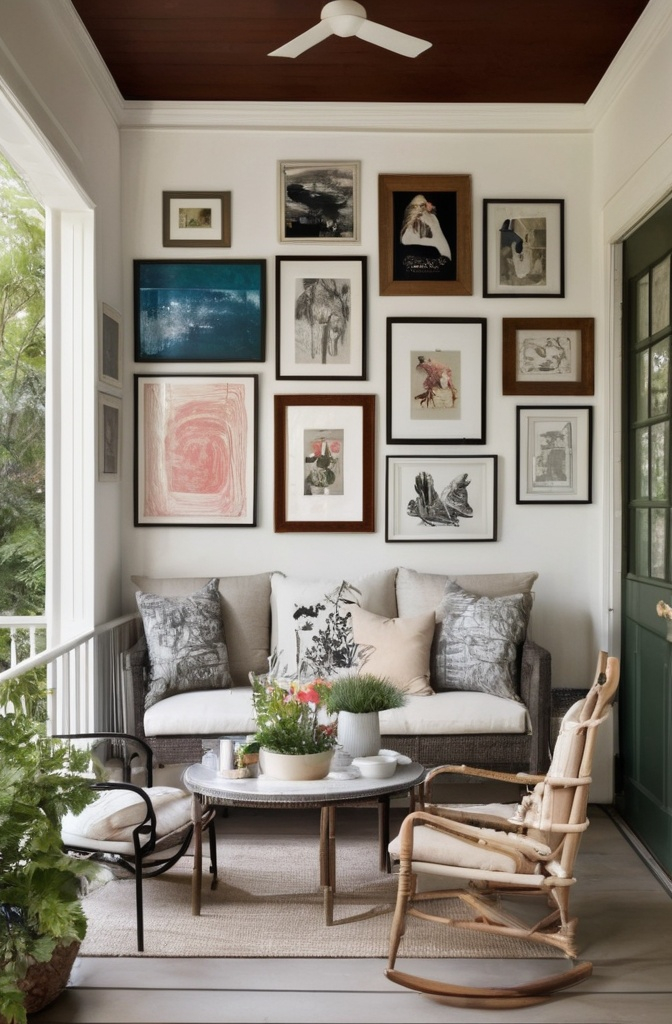
Handmade items bring warmth and authenticity to even the most contemporary spaces. A 2023 consumer behavior study by Apartment Therapy found that 78% of respondents felt spaces with handcrafted elements felt “more personal” and “less generic” than those without.
Consider these handcrafted additions:
- Headboards from unexpected materials: Custom pieces made from reclaimed wood, hand-woven textiles, or even macramé create focal points impossible to duplicate.
- Ceramic bedside lamps: Hand-thrown bases with custom shades provide sculptural interest while performing necessary functions.
- Artisanal textiles: Hand-block printed pillows, hand-knotted rugs, or naturally dyed throws add layers of history and craftsmanship.
When incorporating handcrafted elements, resist the urge to match everything. The beauty of handmade pieces lies partly in their imperfections and uniqueness.
16. Travel-Inspired Decor Stories
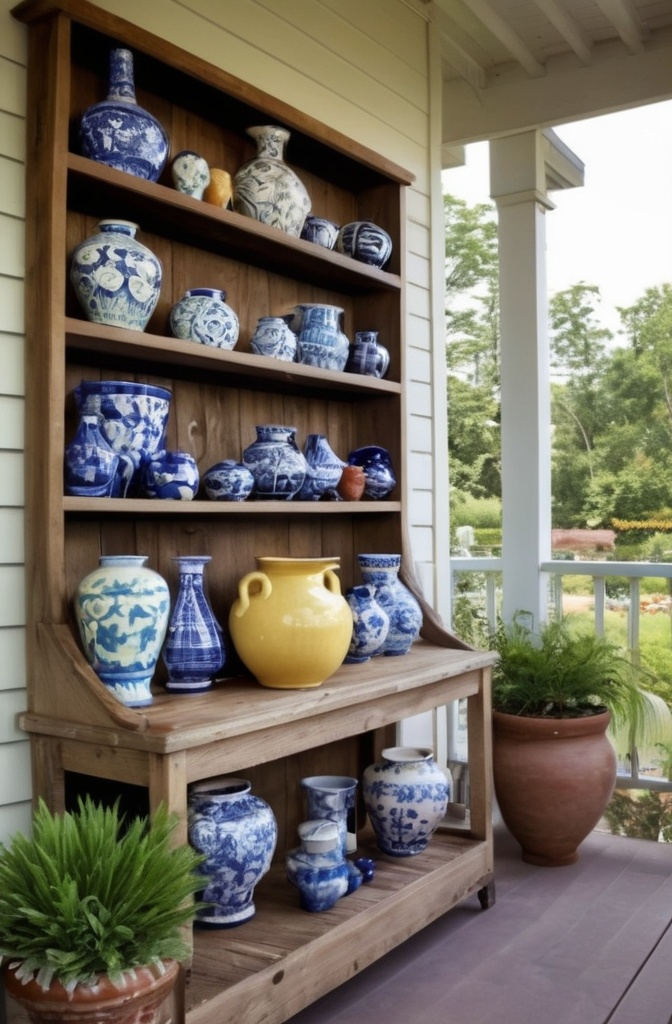
Travel experiences shape our perspectives and create meaningful memories. Bringing these experiences into bedroom design creates spaces that feel both personal and expansive.
Consider these approaches:
- Architectural photography: Rather than typical tourist shots, focus on architectural details, textures, and patterns from your travels, printed in large format and simply framed.
- Textile integration: Incorporating fabrics from meaningful destinations—perhaps a Moroccan wedding blanket at the foot of the bed or indigo-dyed pillows from Japan—adds both visual interest and personal significance.
- Color palette extraction: Designer Kelly Wearstler often creates color schemes extracted from clients’ favorite travel photos, translating meaningful experiences into daily environments.
The key to travel-inspired decor is subtlety. Rather than creating a themed room that feels like a hotel, incorporate elements that spark personal memories while complementing your overall design aesthetic.
Style-Specific Bedroom Approaches
While personal style should always lead bedroom design decisions, these established design approaches offer cohesive frameworks for creating spaces with intention.
17. Japandi Fusion Techniques

Blending Japanese minimalism with Scandinavian functionality, Japandi design emphasizes quality over quantity and natural materials over synthetic alternatives. According to Pinterest’s 2024 trend report, searches for “Japandi bedroom” increased 320% year-over-year.
Key elements include:
- Natural material focus: Unfinished woods, especially lighter varieties like white oak and ash, paired with natural stone, linen, and cotton.
- Functional minimalism: Every item serves a purpose, with beauty emerging from utility rather than decoration.
- Neutral palettes with depth: Rather than flat whites, Japandi embraces textural neutrals—think rice paper whites, charcoal blacks, and numerous shades between.
To prevent Japandi spaces from feeling cold, incorporate wabi-sabi principles that celebrate imperfection. Handmade ceramics, slightly irregular textiles, and materials that patina beautifully with age add soul to minimalist frameworks.
18. Updated Mid-Century Modern
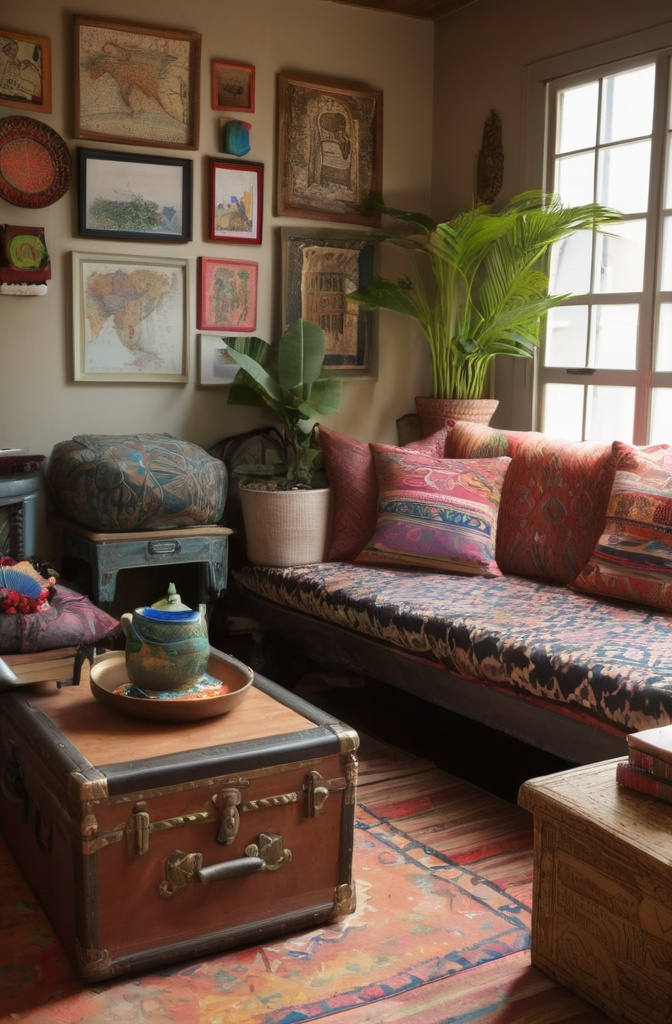
Classic mid-century design (roughly 1945-1975) continues influencing contemporary interiors, but today’s interpretations add softness to the often angular original style. “We’re seeing mid-century forms with more comfortable proportions and cozier materials,” notes furniture designer Sarah Richardson.
Consider these modern interpretations:
- Curved variations: While original mid-century pieces often featured straight lines, contemporary versions incorporate gentle curves that feel more inviting.
- Material warming: Replace some of the period’s emphasis on teak with lighter woods like white oak or walnut for a fresher take.
- Strategic upholstery: Update iconic furniture shapes with current textiles—perhaps a classic platform bed frame paired with a bouclé headboard.
Color palettes have evolved too. While authentic mid-century colors included olive green, burnt orange, and mustard yellow, today’s interpretations often incorporate softer terracottas, muted teals, and warmer neutrals that reference the period without replicating it exactly.
19. Biophilic Design Implementation
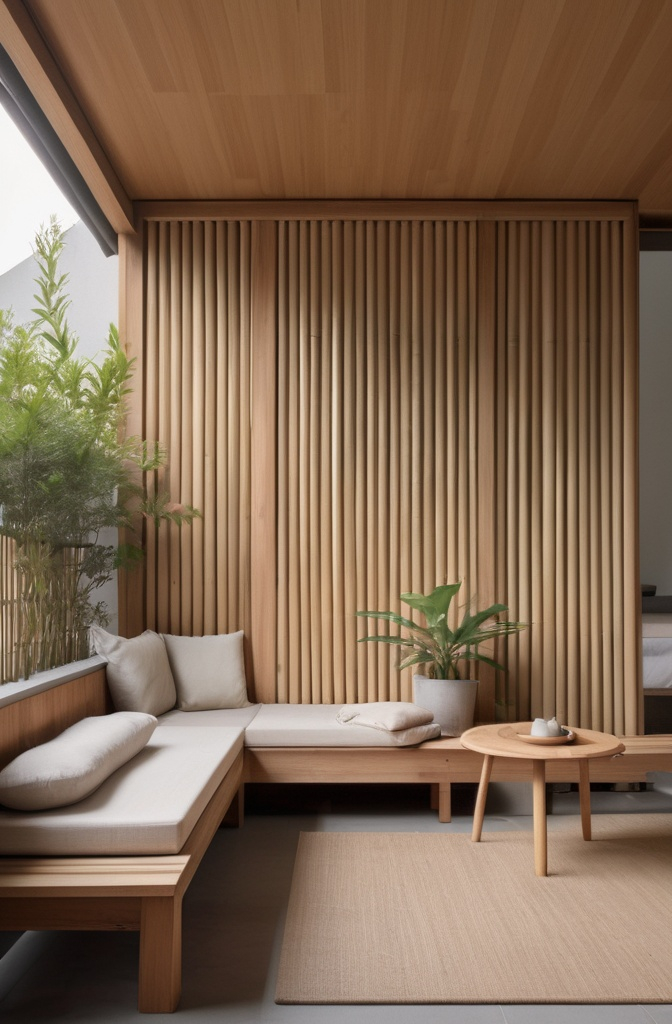
Biophilic design—connecting indoor spaces to nature—isn’t just aesthetically pleasing; it’s physiologically beneficial. A landmark study by the University of Washington found that rooms with natural elements reduced heart rates by 8-12 beats per minute compared to purely synthetic environments.
Consider these biophilic approaches:
- Material authenticity: Choose natural materials that age gracefully—wool, cotton, wood, stone—over synthetics that imitate these qualities.
- Natural light optimization: Window treatments should maximize daylight while providing necessary privacy, perhaps through semi-sheer layers that filter rather than block light.
- Fractals and patterns: Incorporate elements with the mathematical patterns found in nature, from leaf-like textile prints to lighting that casts dappled shadows similar to sunlight through trees.
Living plants remain the most direct biophilic element, but thoughtful selection matters. Species like snake plants, pothos, and ZZ plants thrive in bedroom conditions while purifying air. For those lacking green thumbs, high-quality botanical prints or pressed plants in frames offer alternative nature connections.
20. Boutique Hotel Inspiration
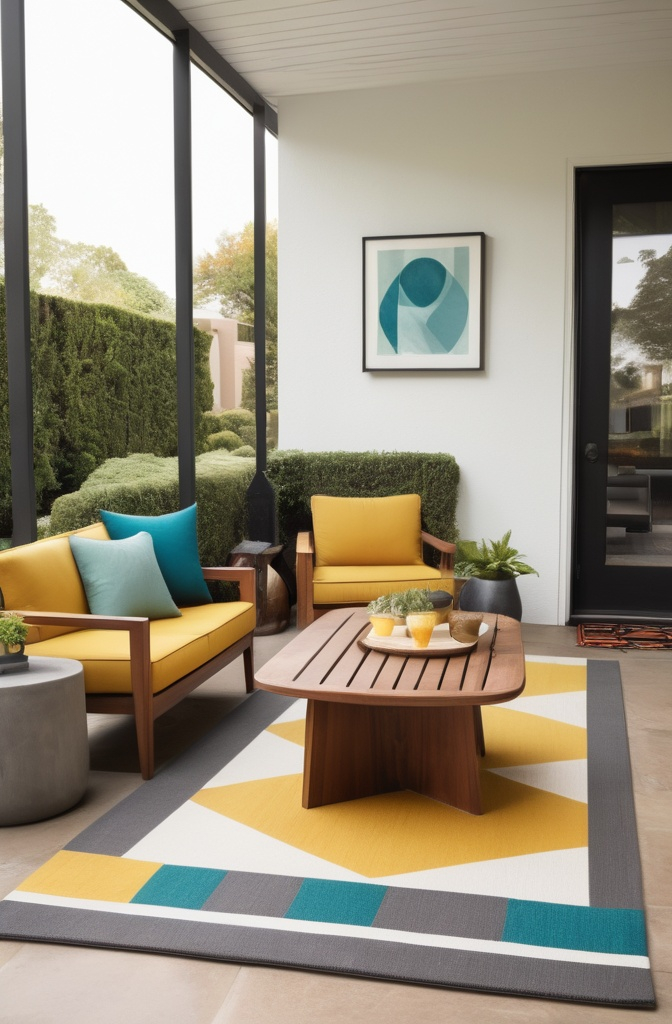
Boutique hotels invest substantially in creating memorable sleep experiences, making them excellent sources for bedroom inspiration. “Hotels must create spaces that feel simultaneously special and comfortable for diverse guests—exactly what we want in our own bedrooms,” explains hospitality designer Martyn Lawrence Bullard.
Consider these boutique hotel techniques:
- Bedding layers: Luxury hotels typically use five distinct layers: fitted sheet, flat sheet, lightweight blanket, duvet or comforter, and decorative throw.
- Lighting redundancy: Multiple light sources at different heights create flexibility for various activities and moods.
- Symmetry with disruption: While basic layouts often feature symmetrical elements (matching nightstands, balanced artwork), distinctive boutique hotels introduce one unexpected element that prevents stuffiness.
The most successful hotel-inspired bedrooms cherry-pick luxurious touches while maintaining personal character. Complete replication risks creating spaces that feel generic rather than special.
21. Grandmillennial Style With Edge

Sometimes called “granny chic,” Grandmillennial style reclaims traditional elements often considered stuffy or outdated, recontextualizing them for contemporary living. House Beautiful credits designer Mallory Mathison with popularizing this approach that balances nostalgia with freshness.
Key elements include:
- Pattern mixing: Florals, stripes, and checks coexist through careful scale variation and color coordination.
- Traditional furniture with modern fabrics: Perhaps a wingback chair upholstered in contemporary geometric fabric or a antique bed frame paired with solid modern bedding.
- Curated collections: Displaying vintage items like porcelain, silver, or first-edition books adds depth without clutter.
The most successful Grandmillennial bedrooms avoid becoming period rooms by incorporating clearly modern elements—perhaps contemporary lighting fixtures or abstract art—that create tension with traditional pieces.
22. Coastal Modern Without Clichés
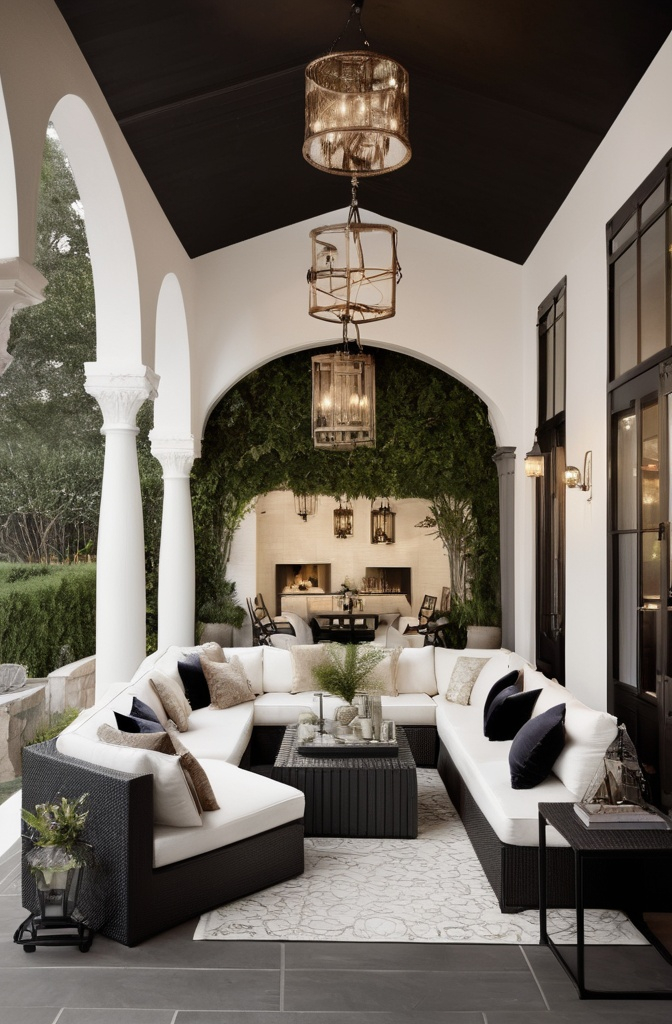
Coastal style often devolves into themed excess with lighthouse figurines and rope accessories, but sophisticated interpretations focus on qualities of light, texture, and tranquility.
Consider these elevated approaches:
- Color through saturation levels: Rather than obvious blues and whites, explore the full spectrum of coastal colors through varying saturations—perhaps deep indigo, fog grey, and sand rather than primary blue and stark white.
- Textural references: Incorporate coastal textures through materials like grasscloth wallcovering, nubby linen upholstery, or cerused wood that references driftwood without being literal.
- Quality over quantity: One exceptional piece with subtle coastal influence—perhaps a handcrafted bed with gentle curves reminiscent of waves—makes more impact than numerous themed accessories.
Designers like Jeffrey Alan Marks create coastal spaces that feel connected to waterfront locations through quality, composition, and subtle reference rather than obvious symbolism.
Conclusion
The most successful bedrooms aren’t purely trendy or purely practical—they balance multiple needs while expressing personal identity. As you consider these 22 approaches, remember that authentic spaces evolve gradually. Start with foundational elements that support good sleep and daily function, then layer in style and personal expression over time.
Interior designer Amber Lewis suggests, “The perfect bedroom should feel like the most honest version of yourself. Not who you wish to be or who you think others expect—just authentically you.”
Whether you implement a single idea or combine several approaches, the goal remains creating a space that supports both your physical rest and emotional wellbeing. In our hyperconnected world, the bedroom’s role as sanctuary becomes increasingly vital—worthy of thoughtful investment and personal expression.
What bedroom style ideas will you implement first? The journey toward your ideal sleep space begins with a single step—or perhaps a single perfectly placed pillow.
